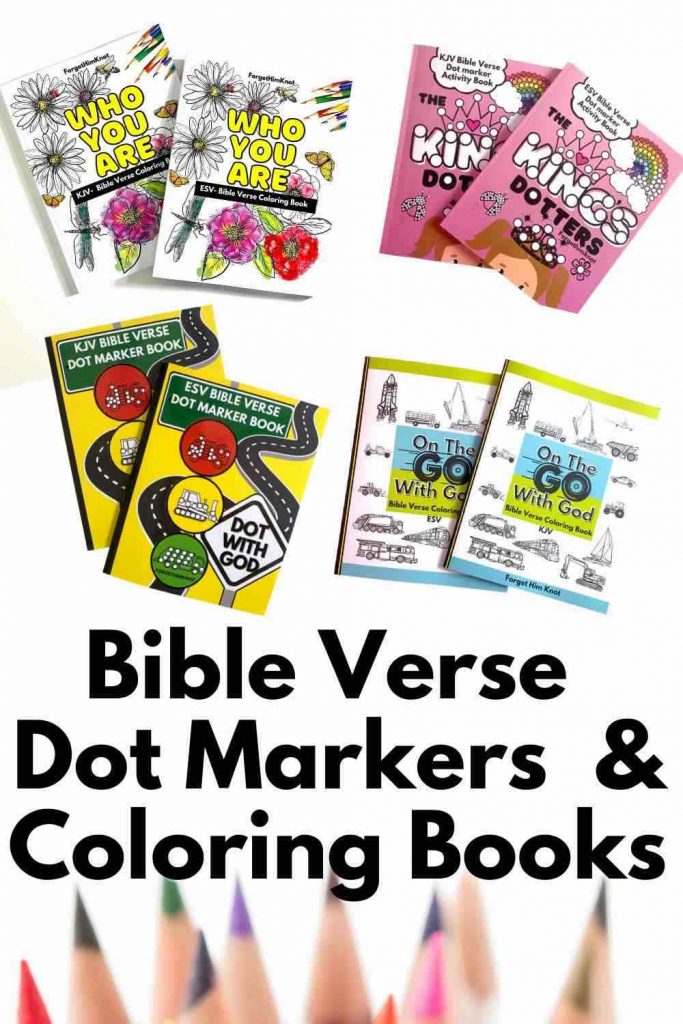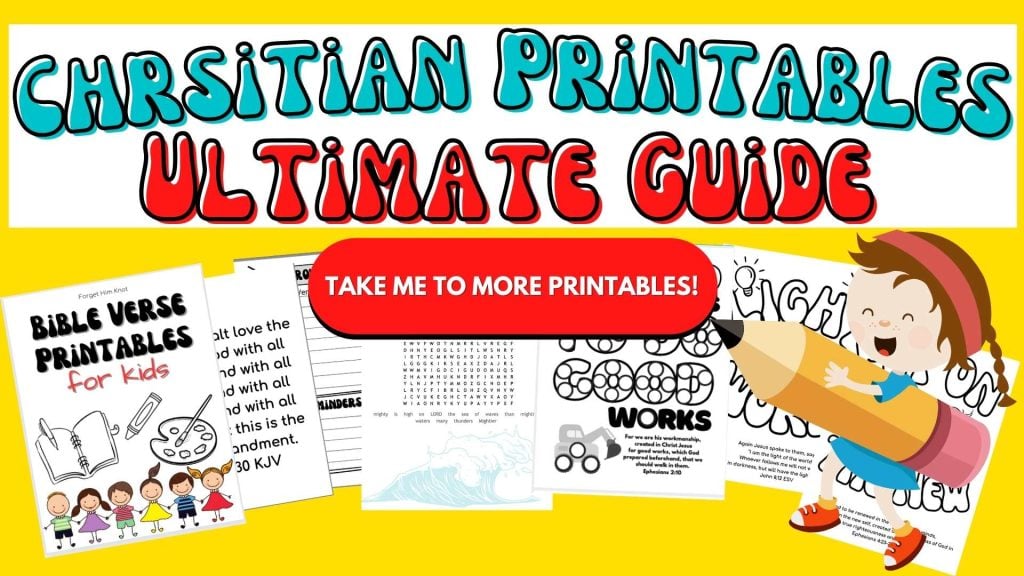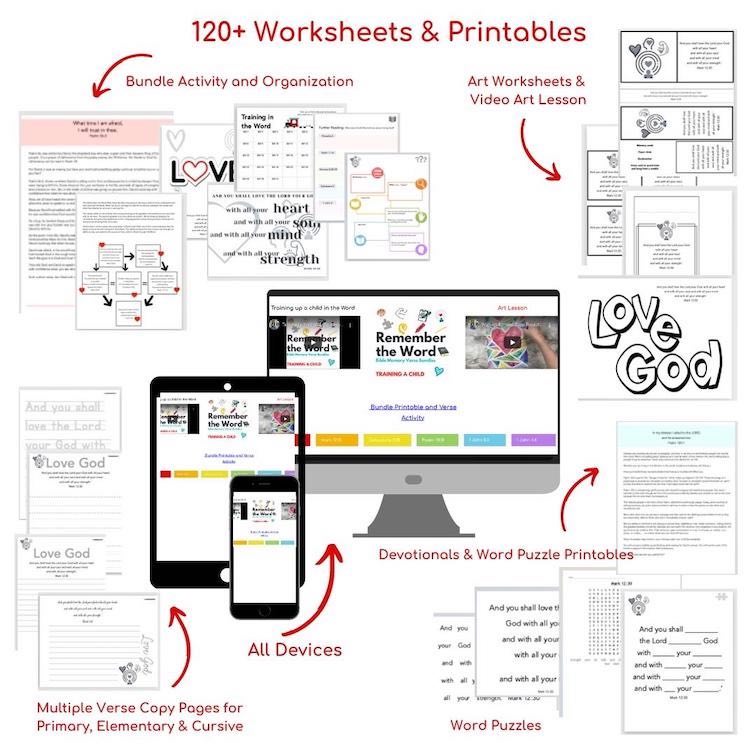Are you wanting to study the Bible but are unsure where to begin?
We get the struggle! The Bible is a large book composed of 66 books. That’s a lot of information to understand. The Bible is God’s Word, His story, His instructions and our tangible ability to know Him. Who God is can be discovered on every page and His essence in every chapter.
The Bible is also how you can discover who you truly are and whose you are.
Let’s make Bible study for beginners easier by answering some of the following questions and sharing our favorite way to begin working through the Bible with Bible study lessons. Enjoy our free bible study lessons with questions and answers!
How should a beginner study the Bible?
What is the best way to study the Bible?
What book of the Bible should I study first?
What book of the Bible should I read to get closer to God?
Bible Study Guide for Beginners
How should a beginner study the Bible?
Knowing God’s Word is vital to living. It is how we learn more about God, life and whose we are. Bible study does not have to be complicated. We created a Bible study guide for beginners with a free Bible lesson.
When you are beginning to study the Bible with your kids, the complication can be where to start, what to teach and how to add your Bible study into your day.

Bible Study for Beginners
When both of our families were little kiddos, we struggled with finding how to study the Bible with our kids. Have you ever tried to read Genesis completely to your children?
There’s some subjects that are tough to explain to a child. Yet, for many years, Hebrew children would have sat with their parents memorizing the first 5 books of the Bible by heart.
When we began homeschooling, (visit our Christian homeschooling tips and ideas) we couldn’t find a Bible curriculum for all our kids. Many studies were written too old for them to grasp or too diluted and busy.
The message of God’s Word is for even a child to hear, believe and understand. The Bible contains the instructions to help us in this life. Most importantly, God’s Word tells who you are and whose you are or better yet, who God is and who you are in Christ.
We discovered that there was no “one way” to help our children learn about the Bible. In truth, we utilized several methods to Bible study with our kids. We hope these tips will help Bible study for beginners to be a daily routine! *Post contains affiliate links.

How to understand the Bible for beginners
Understanding the Bible is not complicated when you learn more about what the Bible is, how it applies to your life and the structure of Scripture. Bible study can actually begin with studying the inner pieces of the Bible.
Bible Study Guide for Beginners
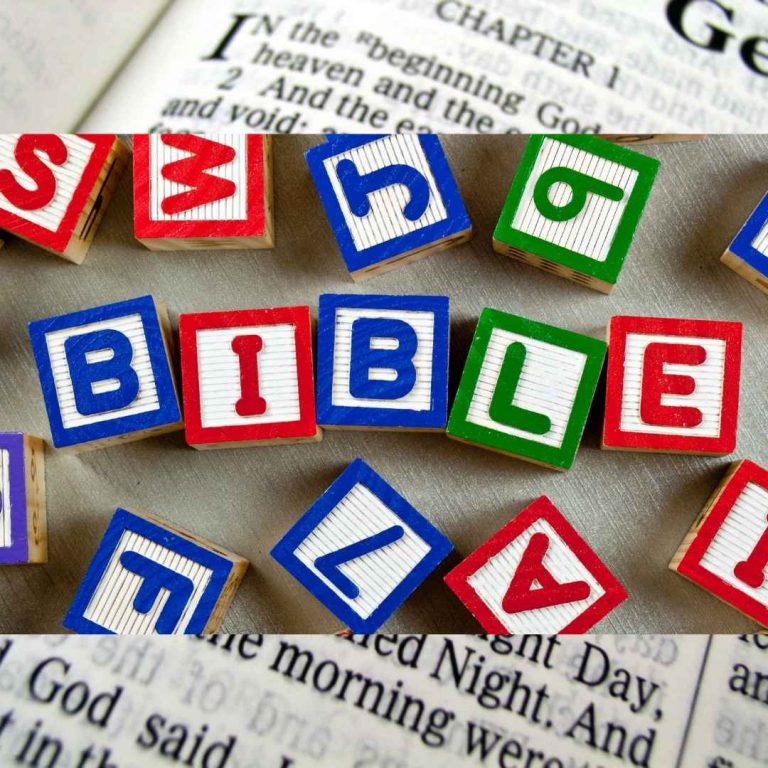
• The Bible is made up of 66 books comprised of the Old and New Testaments
• Those 66 books read like one, yet they are not in chronological order of events.
• Studying the Old Testament is important to understanding the New Testament.
• If you only read the New Testament, you miss understanding the beginning of the story, found in the Old Testament.
• The History of the Bible covers a period of 4100 years from 4004 B.C to 96 A.D. according to James Ussher, the Archbishop’s Chronology of the Old Testament. . In these 4100 years, the history of God’s dealings with humanity has been written in one complete volume.
It was written over a period of 1500 years.
40 different writers make up the Bible.
It is the inspired Word of God.

The Old Testament
• Mostly written in Hebrew before the time of Christ, but very much about Him.
• The Old Testament contains prophecies and predictions fulfilled by Christ. It is divided into Historical books, Poetic books and Prophetic books.
• The History of the Old Testament is in complete harmony with secular history.
• The study of the the Old Testament confirms the inspiration of all God’s Word.
2 Peter 1:20-21
Above all, you must understand that no prophecy of Scripture came about by the prophet’s own interpretation of things. 21 For prophecy never had its origin in the human will, but prophets, though human, spoke from God as they were carried along by the Holy Spirit.
2 Timothy 3:15-17
and how from infancy you have known the Holy Scriptures, which are able to make you wise for salvation through faith in Christ Jesus.16 All Scripture is God-breathed and is useful for teaching, rebuking, correcting and training in righteousness,17 so that the servant of God may be thoroughly equipped for every good work.
The Old Testament is our tutor to
bring us to Christ.
The Old Testament was written for our learning.
1 Cor. 10:6 & 11
Now these things occurred as examples to keep us from setting our hearts on evil things as they did.
These things happened to them as examples and were written down as warnings for us, on whom the culmination of the ages has come.
Romans 15:4
For everything that was written in the past was written to teach us, so that through the endurance taught in the Scriptures and the encouragement they provide we might have hope.
The New Testament
• New Testament contains over 450 quotations from the Old Testament!
• The New Testament is a book of Letters or Epistles written to various people to be shared and spread.
• The first 4 books of the New Testament are known as the Gospels telling of the gospel, or good news, that Jesus is the Son of God who died for the sins of the world. He is grace and forgiveness if you choose Him.
• Romans and Hebrews would be hard to grasp without understanding the Old Testament. The prophecies of the Old Testament are telling us more and more about Jesus, the Word, and of His love for His creation.
John 5:39
You study the Scriptures diligently because you think that in them you have eternal life. These are the very Scriptures that testify about me,
The New Testament delivers Christ, the Messiah, His birth, purpose, teachings, actions, love, sacrifice, death and being raised to life.
Just like the people in the Old Testament were waiting for the Messiah to come and be their King, we are awaiting Christ, the King’s return!

Bible Study Lessons
Studying the Bible is the only way to know more about God, life and who you are.
- God is the Creator.
- The Bible is His Word to us.
- Only He gives us life.
To know more about Him, we have to be students of His Word because He is the author.
For us to tell you how to study the Bible, we need to begin in the beginning to best understand what the Bible. is. After all, who begins a book in the middle expecting to understand the characters, plot or villain?

Even good books written today tell you a little about the author. So in our opinion, the best way to begin studying the Bible is in the beginning where you can begin to to know the Word.
John 1: 1-5
In the beginning was the Word, and the Word was with God, and the Word was God. 2 He was in the beginning with God. 3 All things were made through him, and without him was not any thing made that was made. 4 In him was life, and the life was the light of men. 5 The light shines in the darkness, and the darkness has not overcome it.
The Bible is the only book that tells us where we came from, why we are here, and where we are going!
In the Bible you will find information about before time, beginning of time, periods of time, and the future of time all in one beautifully written book.
The Bible tells us about our God.
● His nature
● His love
● His dealing with mankind
● His plan and purpose for life
● His care and reward for faithfulness
Whether you are a Bible study beginner or you have studied the Bible all of your life, we all can learn new ways to study the Bible and gain fresh insight into who God is
What book of the Bible should I study first?
That is not an easy question to answer. As we said above, the beginning is the best place to begin.
Genesis is the first book of the Bible and means “beginning”.
God’s Word is a story of Who He is, what He as done, His relationship with His people and what He wants for you. Like story book, you would begin at the beginning and read to the end.
But there are several books in the Bible that you can read alone to discover details about God that do not read exactly like a story, such as Psalm, Proverbs, and Song of Solomon.
If you read those apart from understanding who wrote them, what they are referring to or their purpose, you will miss key insights into a deeper relationship with God.
This is where a good Bible resource or handbook to the Bible comes in “handy”. It can give you background information that helps better understand the books of Law, poetry, the prophets, the Gospels, and the letters which make up the books of the Bible.

Why are there so many translations of the Bible?
Walk into a store or go online to purchase a Bible and you will find more choices than you can filter through in a day. With so many different translations it can be hard to know which Bible to choose.
Understanding how the many translations came to be will help you understand when you are beginning your Bible study.
The Tanakh

The original language of the Old Testament was Hebrew. It was divided into 3 areas: The Law, The Prophets and the Writings. Or in Hebrew they would be known as Torah, Nebiim, Ketubim comprising the first of the letters, T N K also known as the Tanakh.
Although the Old Testament was written in the Hebrew language, it was not a language used by everyone. That would be Greek.
The New Testament was mostly written in Greek.
Historial: Genesis – Deuteronomy
Poetic: Job- Songs of Solomon
Prophetic: Isaiah – Malachi
The Septuagint

The Septuagint established to convert the Hebrew into Greek. It would later aid in the translation used in Rome for the Latin Bible, the Vulgate.
The Septuagint changed the order when translating it into the Greek language to what we have today.
But when the Catholic church was shaken by Martin Luther and the Reformation began, the Hebrew Bible would be the translation used over the Septuagint Greek.
Translations
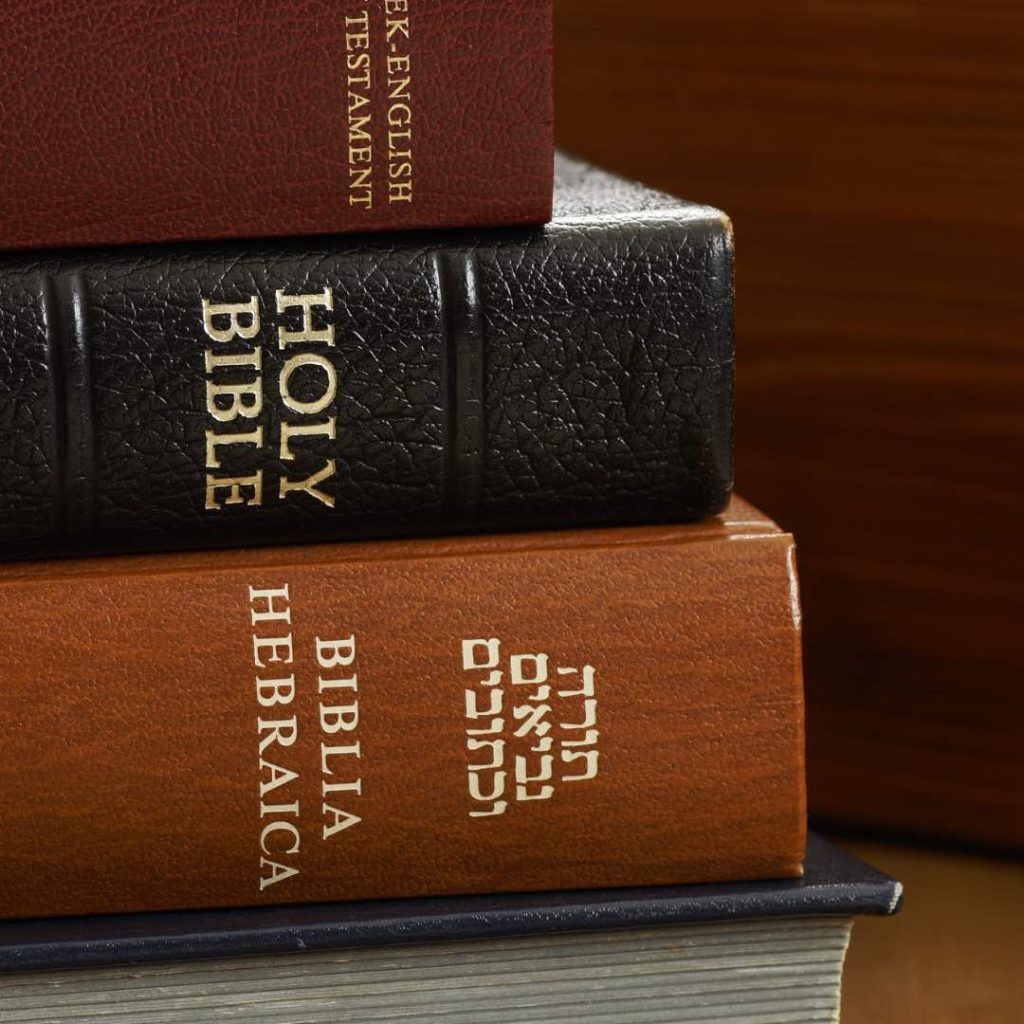
For you to have the Bible in your hand today, many men would sacrifice their lives. The 40 men who compose the Word of God were inspired by the very breath of God.
With the Word of God spreading throughout the world, it would need to be translated into the languages for the people to read and understand. We aren’t all Hebrew and Greek speaking people!
There would be many men making this happen.
- Wycliffe 1382 (used the Vulgate),
- Tyndale 1525 (used the Hebrew and Greek),
- Geneva Bible 1560 (divided the Bible into verses)
- King James Version published in 1611 and revised in the late 1800s.
Most Bible translations today use either a word for word approach or a thought for thought approach.
So how do you know which Bible translation to use?
What Bible translation will help me understand the Bible?
What Bible should I use?
Those are questions we get asked many times. There is no perfect answer. Although there are many opinions!
Some will tell you that the King James Version is the only accurate translation to use. It is the only version authorized by a King, but he was also a King who disliked the Christians. They caused him trouble.
It was translated by 56 scholars who used the Greek and Greek- Latin texts to bring us an English version . It is a word for word type of translation. But sometimes this approach can be hard to read in our modern language.
Many of the other translations we have are a thought for thought translation which can make Bible reading easier. The struggle with this translation approach is that it can become a paraphrased version of the Bible or leave several verses out from the King James Version translations.
Though many are easier to read in our modern times, they can water down the meaning a bit or change the actual direction of the original word or phrase.
KSV and ESV Bible translation comparison
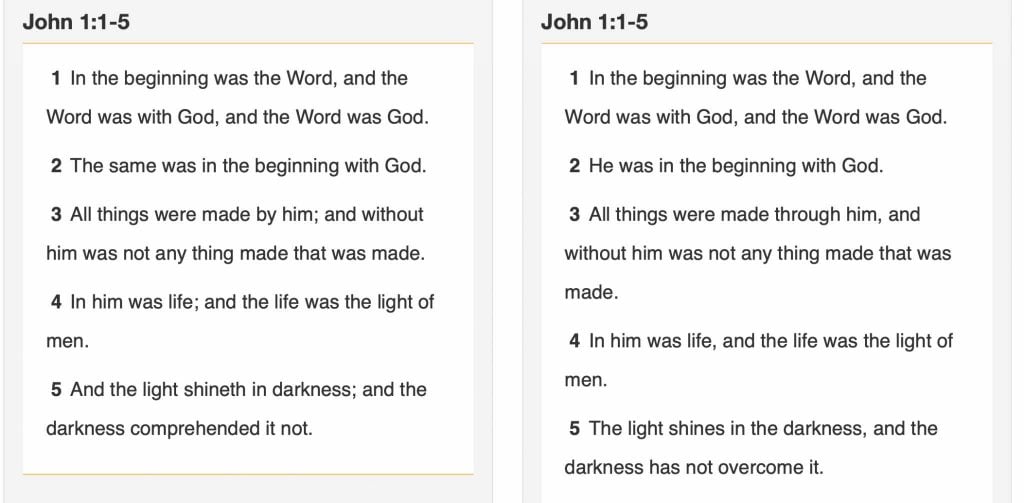
KSV and NIV Bible translation comparison
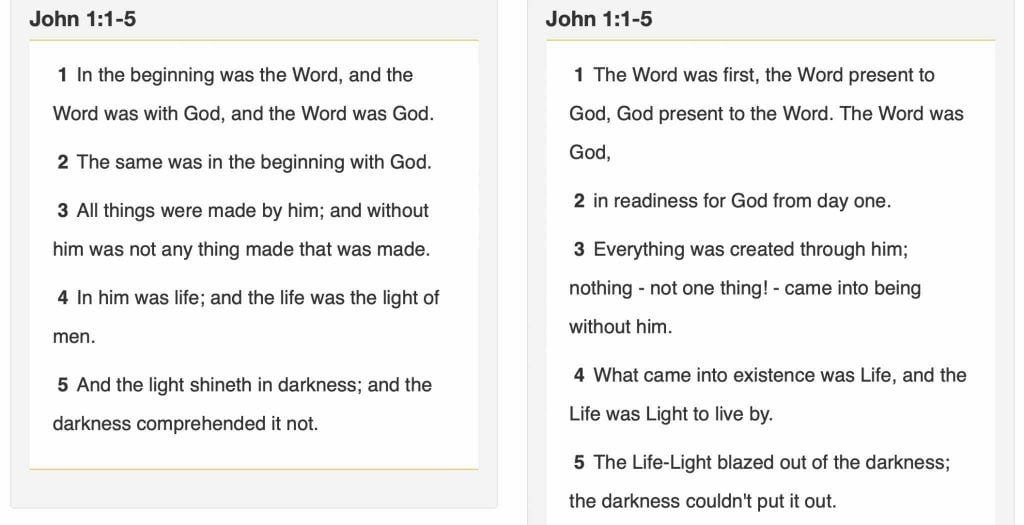
KJV and The Message translation comparison
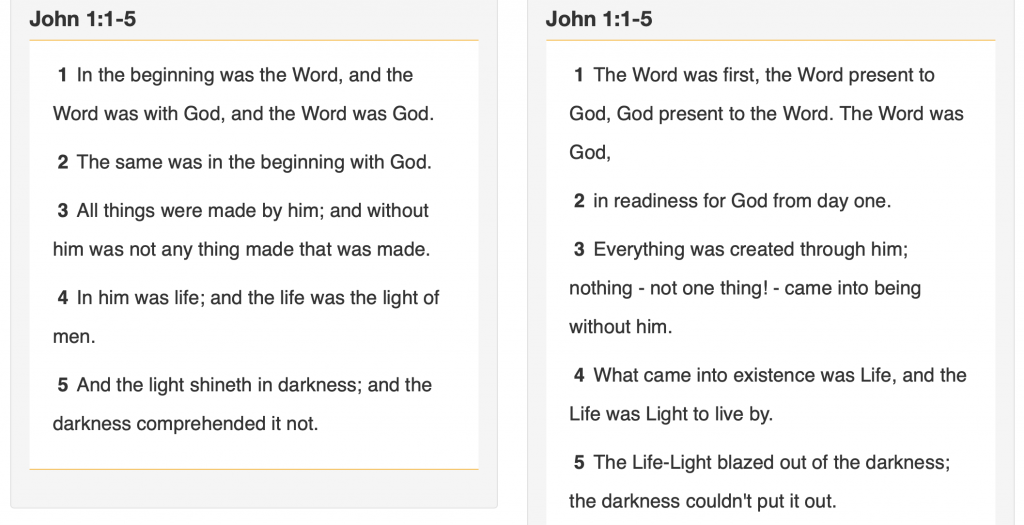
You can see that thought for thoughts can be easier to read, but the KJV’s word for word helps understand the original meaning of words. Some passages will resemble the KJV while others translate differently or are missing several words or verses that seem important from the original text.
For all these facts and reasons, we like to use a parallel Bible for our Bible study time because it allows us to compare the word for word translation of the King James Version next to another version such as the English Standard which is a more thought for thought translation.
One is easier to read while the other is great for deeper study.
You might even find us with a comparison of 4 versions at a time! No, really. You can purchase a side by side comparison Bible or find great Bible translations online to compare traslations.
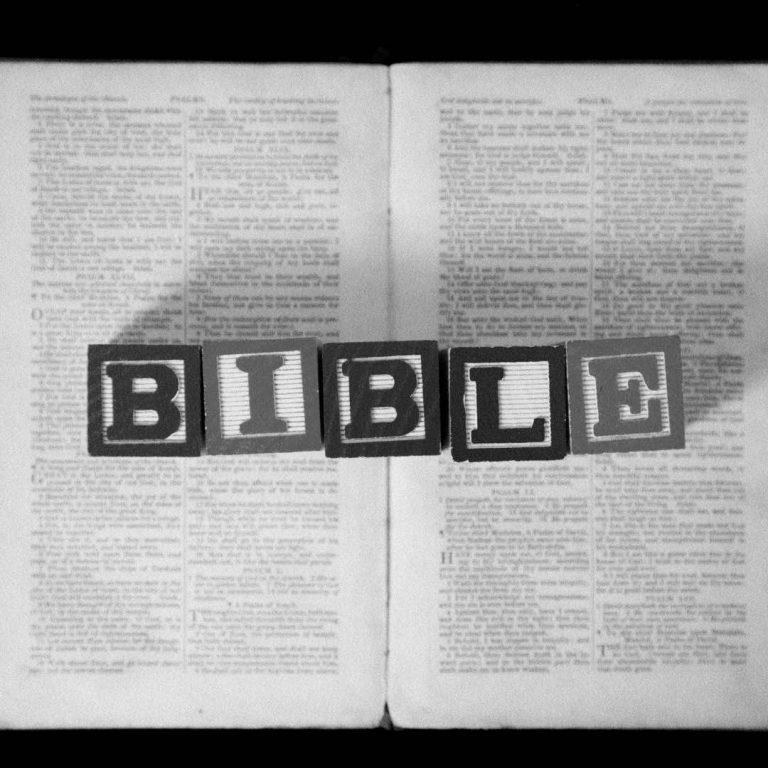
The Bible is black and white on what God desires for His people.
It has been said that the Bible was written on a 9th grade level of understanding and comprehension.
That may be true, but we’d dare say that even children much younger can understand the basic concepts of the God’s Word.
The Bible is:
- God’s Word
- Instructions for how to live
- Great true stories that give examples of who God is and what He wants the world to know about Himself.
If children younger than a 9th grade comprehension level can understand these 3 facts, we adults can learn much from them! Why?
Jesus wants you to come to Him not with your adult understanding, opinions and thoughts. Nope. He wants you to come to Him with your child like eyes and heart to be amazed and awed….to see the simple in the complex.
When we come to Him with our opinions and thoughts, we will struggle with what makes sense to us and what we’ve been taught. We get in our own way of understanding the Bible.
What do we mean by this? Here’s a classic example.
Genesis 1, tells us that God created the world and all that is in it in 6 days and rested on the 7th.
The world tells you so much information trying to contradict that basic understanding. Science stumbles to understand that there is a God who created all things and that it could possibly been done in 6 days. Science believes the world was created from 2 particles of dust.
Scientists and Science books will tell you contradicting information. This is why studying the Bible is so important.
How to read the Bible for Beginners
Reading the Bible can be as hard as you make it. There are several variables that can make your reading easier than others.
We talked about the many different translations. The King James Version can feel like a reading a Shakespearean play with all the Old English wording. The KJV was written for the English speaking people, but that was in the 1600’s and our language has shifted and morphed in words and meanings.
Though the KJV can be harder for beginning Bible reading, it’s great for digging into the words and their meanings because we have tools such as the Strong’s Concordance that gives us the original word meanings from the Hebrew and Greek languages.
A thought for thought translation is easier to read. But as we mentioned before, sometimes the words in our language are lost in translation…. meaning we may not have a word that conveys the same meaning.
That is why we like a side by side comparison or parallel Bible for Bible study and a thought for thought translation such as the English Standard Version for reading.
There are so many online versions available with the parallel, Stong’s and other tools to help you understand more about the Bible.
Our favorites are Biblestudytools.com, BlueletterBible.com and Biblegateway.com
Simple Bible Study Ideas for Beginners
When you were in school, your teachers would have used several methods to help you learn and retain information. Visual, auditory, reading and kinesthetic (hands on). You are strong in one of these styles and probably use a combination of them without realizing it.
A simple Bible study method incorporates your learning style and a few others together.
The best way to learn God’s Word is to read it. But if you are not a strong reader that might be a struggle. Perhaps having it read to you, or an audible Bible would be your best course of action.
Connecting hands on methods can help you retain Bible knowledge too. That’s why we create Bible Art lessons to help kids of all ages in a hands on way learn about who God is and who we are in Him. Using your God given creativity to know Him and glorify Him with our Art (and all it’s forms) can also help us remember what He says in the Bible.
How to study the Bible for beginners

Ways to incorporate the Bible into your day

Studying the Bible can seem hard with all the prophecies, instructions, concepts that seem contrary to what the world is telling. and trying to grasp how old stories from ancient life years ago can be applied to your modern life.
Well, that is why studying the Bible is important so that we can learn how all those hard things to understand affect and apply to our life.
Anything in life that we want to know more about or learn how to do requires research, study, knowledge and experience. You will find this is also true of Bible study.
We like to begin Bible study with these 5 simple steps.
- Pray
- Read
- Dig in the Word
- Research
- Pray
#1 Pray

#2 Read
We’ve already discussed how God is the Creator. The Word was with God, was God and was with God in the beginning and all things were made through Him.
If you read a little further down in John 1, you will discover that the Word is Jesus.
Reading the Word is how we learn more about Jesus, the Word and what He has done for us.
It is how we get to know more about Him.
Everytime you pick up the Bible to read it, you will learn something new about Him. Even if you read a story multiple times, you will pick up a new and fresh word, phrase, or instance that you may have prior missed.
Reading God’s Word can seem hard if you don’t know where to begin.
We advise you to begin in the beginning! Read a verse, several verses, a passage of verses, a chapter or a full book. Just begin reading.
Then dig a little deeper into the Word. Make notes of what you read, don’t understand or want to look up for better understanding.
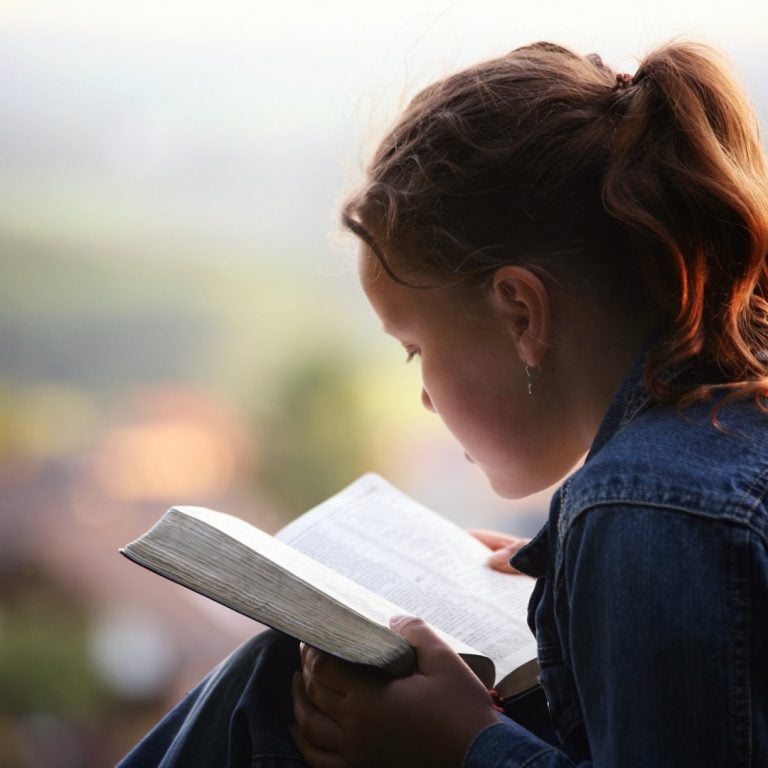
#3 Dig in the Word
What do we mean by digging a little deeper?
When you were in school, you would be given an assignment to read a chapter from a book. Later, you teacher may have asked you questions to see if your reading comprehension.
You may have even had to do a book report about the book.
You know, where you wrote down who, what, when, where, how and why the book was written and then an essay about what the book was about.
Did you have vocabulary words? Sometimes, teachers would give a list of words that they wanted you to know more about or understand their meanings.
They may have even asked you to use the words in a sentence. Why? To see if you comprehend what the book or words were actually about and could you apply them to a concept.
Being a student of God’s Word can apply those same steps to digging deeper into the Bible.
• Dig deeper into the Bible to understand what you are reading.
• Make an intentional effort and plan to read the Bible together.
• Ask questions that stir conversation and discuss what you read.
• Dig deeper into the Bible to understand what you are reading.
First, find a Bible that you can read and understand. There are many opinions on what translation is accurate. If you are beginning Bible study, the King James Version of the Bible may not be easy to read. In truth, many people are turned away because they cannot read past the “thee’s and thou’s” to understand what the context is about.
Others say the Message Bible is too far to the “left” of correctly delivering God’s message.
God’s Word is meant for us to read, eat, and live on so that we can have all we need while on the earth.
2 Timothy 3:16-17
All Scripture is God-breathed and is useful for teaching, rebuking, correcting and training in righteousness,17 so that the servant of God may be thoroughly equipped for every good work.
We recommend that you purchase the Bible that you can best read and follow. Then as you read, compare the verses or passage you read with other translations such as the King James Version, New International Version, New King Jame Version and the English Standard Version.
We both have a comparison or Parallel Bible that has 4 translations in one “book”. Each side by side page has 2 columns of 2 translation allowing you a 4 column view.
We use the King James Version to study deeper words and their original meanings with a Strong’s Concordance.
One of our favorite Bible to read through and toss around in our minds is the Amplified Bible. As you read, definitions of words are in brackets to help you see the meanings of words.
It’s not a book to read aloud because it can drive people crazy! But it is a great way to see the meaning of words in the verse as you read.
You can choose from many translations that have been added for comparison.
When you read in each translation, look for what each translation is saying and compare what they are not saying.
Next, we like to dig into the words in the Word by going to a Strong’s Concordance. With this tool, you can click on words to discover their meaning, origin and how they are used in the verse. You will also be able to click on other verses that use the same word and begin to connect their message.
After we have dug into the words and their meanings, we like to read commentaries to see if we read and understand as they do and if not, what did we discover instead?
Both the Strong’s Concordance and Commentaries can be found on these favorite tools.
and BlueletterBible.com are a few of our favorites to use.
• Make an intentional effort and plan to read the Bible together.
Dreams of a fireside chat with dad reading the Bible and mom and children listening intently, are not everyone’s reality. Making intentional time in the Word is how we learn more about God, His love, His plan for our life and how to deal with relationships. Spending time with the Lord in His Word is not a chore, but a choice!
This can be a Bible study, devotional, topic, theme, or just beginning to read Genesis to Revelation, from Creation to Christ and His Church in chronological order. Helping kids understand a Bible timeline order of the Bible helps them to understand where God is in their life today.
We have created a black and white illustrated Bible Stories Timeline to get you started! Sign up below to access our 4 page Biblical Timeline of events that you can download, print and color.
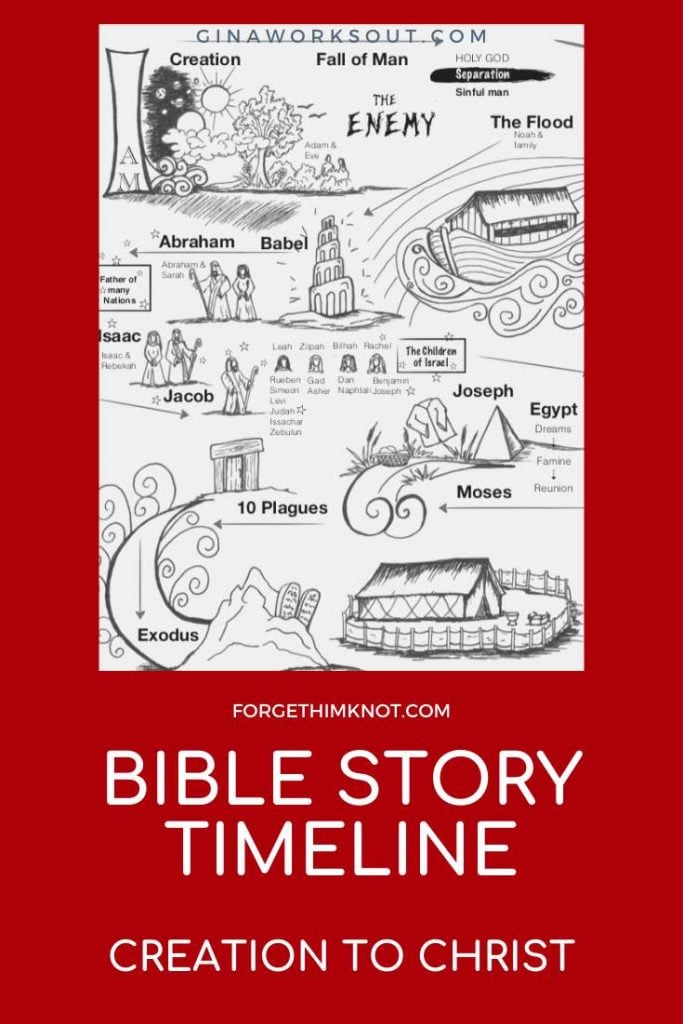
ConvertKit Form
Where Should I Start Studying the Bible for Beginners?
The best place to start is the beginning! Start with creation and follow God’s plan for His people.
- A Chronological Bible helps you to read the stories and events in order.
- Bible story books are great ways to familiarize young children with the people and events in the Bible, but this should not be their only resource for learning about Jesus. The Bible really is your best source for learning about God and life.
- Younger kids may enjoy reading an illustrated Bible along with your translation of choice. There are many levels of illustrated Bibles that read like a graphic novel. There are not meant to replace God’s Word, the Bible, but can be a tool or resource to add with your study
The enemy does not care how old you are. Help your children remember whose they are with our Bible Verse Dot Markers and Coloring Books.

• Ask questions that stir conversation and discuss what you read.
It is amazing the questions a child can ask. Why? Why? Why? Is one word that a kid can ask 100 times a day! One question from a child about the Bible and God can begin hours of deep conversation. Sometime you don’t even need anything other than the Bible and a child for a deep discussion.
The best example you can give you child is not the answer to their questions, but the ability to find their answers!
We don’t have all the answers, but we do have the Word to help us dig deeper and find a new “thing” we did not know. Each time you read or study God’s Word you discover something you didn’t see or know.
It is important to train your children up in the Lord by studying the Bible together. Teach your kiddos how to study their Bible and learn more about God by watching you!
Ask Questions
Who wrote the book or passage?
To whom was the book or passage written?
Who is God talking to in the chapter?
What is He saying?
Where is God?
What is He doing?
Where is “man” ?
What is he doing?
What should he be doing or what should be the response to God?
What is the overall theme of the book, chapter, passage or verse you read?
How to study the Bible for beginners pdf
You can find this handy Bible study checklist in our Freebie Library
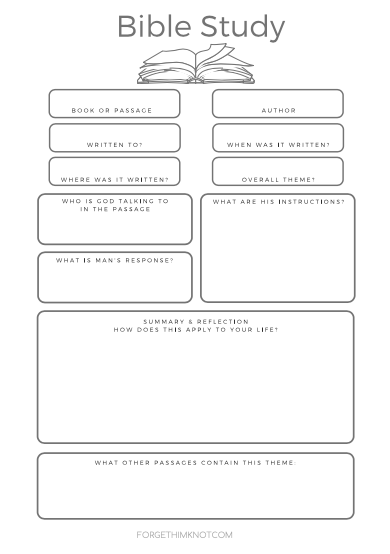

#4 Research
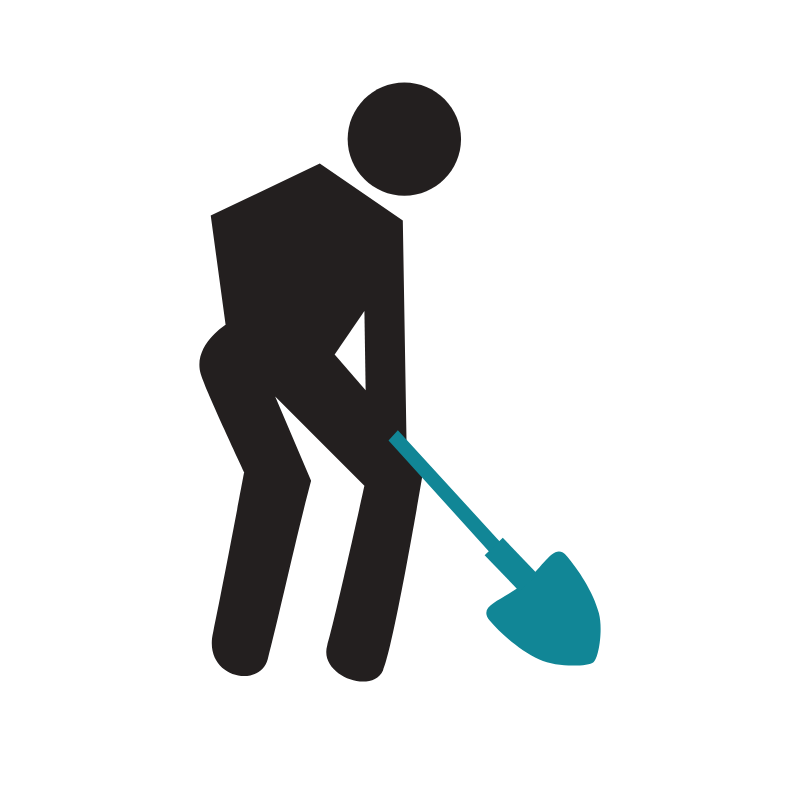
What is Work the Word?
Work the Word is our method for how to study the Bible. There are many other similar methods, but we have tried to keep our’s simple.
Grab the colored pencils and circle and underline key words in the text.
Step 1

Circle all references to God in red. (Names, pronouns and implications.) We like red to represent love and blood to represent God.
He is the author, so His name should be all over the texts. The story is His-story… it’s your History.
Don’t forget to circle all references such as Jesus, Christ, Holy Spirit, Son, The One etc. and all pronouns.
Step 2

Underline all action words to God in red.
Those action words will begin to pop off your text and you will see how alive and active He is.
Seeing Him at work in the Bible will help you to also see Him at work in your life. He is still working!
Step 3

Circle all references to man in purple. (names, pronouns the world etc.) We like to use purple for purpose… it’s easy to remember.
References to people or man could also be “the world”, unbelievers, children, etc.
Don’t forget that English grammar rule of “you” implied!
Step 4

Underline the action words in purple that man is doing or the response he should do.
You will find that God gives clear instructions in His Word and our job is to obey them because we love Him, trust Him and know that He has our best interest for His glory.
How should man respond?
What was man doing?
Step 5

Highlight repeating words you see that create a theme.
Light
Love
World
Peace
Obey
Grace…etc
Whatever the word or theme you see repeating. If God says it once it is important. If He repeats it, it is vital that we get it.
Start assigning certain themes their own colors!
Step 6

Doodling is a great way to put a picture to your text. A visual aid to help relocate the theme throughout the Bible, but it is also the way some of us are wired to remember!
You do not have to be an “artist” to doodle. Just give your word or text a side picture. Then as you study more and more in the Word, you will find that you are doodling certain images over and over.
Mark through “SIN” and it’s actions in black with a doodled X over it.
Step 7
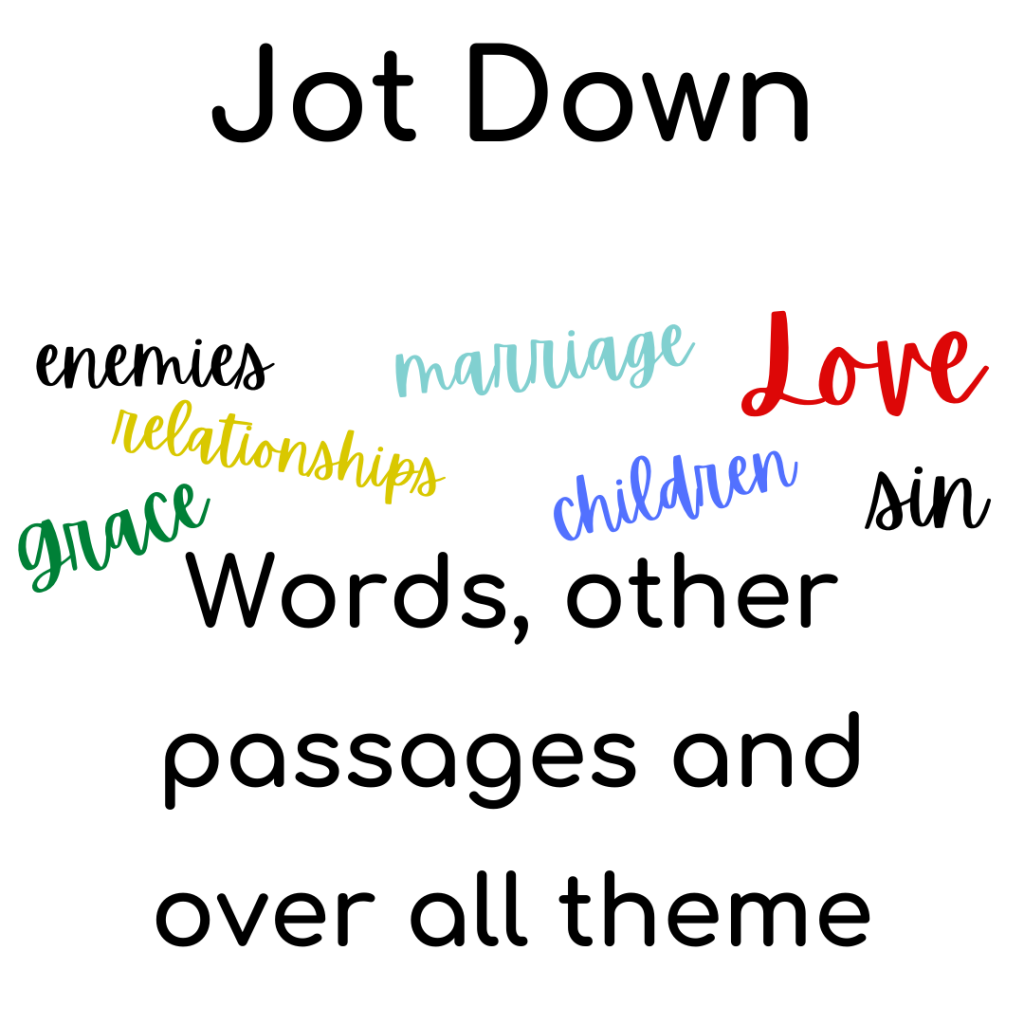
Jot down words, definitions to words, themes, and location of other passages where you see this theme connecting.
This will give you a cross reference to quickly find your thoughts and organize your findings.
Grab your Strong’s Concordance, a Bible handbook and any other reference that helps you better understand the passage.
Why understanding words and their meanings are important Example: Happiness and joy
Let’s look at John 1:1-5 and Matthew 5:14 using our Work the Word method. We used a solid red circle for all the references to God and we circled in red the prepositions that were important next to His name.
Why? Because when you look at this verse closely, you will discover a detail about God that many in the world miss. Who the Word is!
Next we look at how this verse and some of it’s theme link to Matthew 5:14. Light!
How does it apply to you? As Christians, you are the light of the world because you possess His Light. You are a container of His light for others to see clearly in a dark world.
You are to shine His light to others so that they only see Him.
When you circle, underline and highlight key notes in a text, you begin to see the relationship not only between words or themes, but also between God and man!

#5 Pray
Now a days when we don’t know something or understand it, we look to Google.
Google is full of a wealth of information, but it won’t help you know God.
You might receive information, but only God knows God and His Word is where you will find the information from Him.
What you don’t understand after your Bible study, you ask Him about and not someone or something else. Go straight to the source.
It is great to ask a friend, a pastor and even a Bible scholar, but for true understanding, seek the One who created all things and is the very Word of God.
Your prayers and conversations with Him can open a door of knowledge and understanding about the Word, but most importantly, it will open a relationship with Jesus, The Word.
Friend, that is what Bible study is about… to know Him more and more.
This is how we study the Bible and maybe it can be your method too!
As you begin to study the Bible you will not only learn more about God, but you just might learn more about yourself in the process.
Hebrews 4:12
For the word of God is living and active, sharper than any two-edged sword, piercing to the division of soul and of spirit, of joints and of marrow, and discerning the thoughts and intentions of the heart.

Methods to Study the Bible for Beginners
Other methods of Bible study include:
SOAP
Topical Study
Story Study
Book of the Bible Study
Inductive Bible Study
Soap is a method of study that stands for:
- Scripture
- Observation
- Application
- Prayer
A topical study is taking a theme or topic you want to learn more about and seeing what the Bible says about it, such as: tlove, prayer, marriage, divorce, fear etc.
Story study would be similar to reading a child’s Bible story book, but from the Bible. The only issue with this method is sometimes you can miss the context of where a story fits into the bigger picture.
Book of the Bible study works best with the New Testament books of the Bible better than the Old, Many of the New Testament books are letters (Romans to Revelation) written to the churches or specific people.
An inductive Bible study is similar to the method we talked about earlier by digging deeper into the passage or verse you are studying and asking questions for better understanding the context.
Bible studies and devotionals help guide different learning styles to a better understanding of God's Word.
We love a good Bible study that helps to connect and relate to God’s Word or provides deeper understanding through historical events, accounts or geographical insights.
Above, we mentioned a chronological Bible, but we also love a good Bible timeline. We have one that we have used with our kiddos and in our classes in our Freebie Library. Through the years we have used it to study in many ways. Having a visual helps many enjoy seeing the Bible illustrated in order.

• Pray together.
Teaching your children how to talk, praise and thank God for the little things will help them do so as they grow for the big things.
Open prayer in the morning together and talk to Him all day. Then close your prayer at night right before you close your eyes to sleep! Help you and your children develop the ability to always seek God first so they remember Him in all they do.
Prayer over some of the verses you read and ask God to give you clarity and understanding. Tell Him what you discovered and praise Him for the relationship as you are drawing closer to Him.
• When a heart issue or situation arises, research and dig deeper into the Word for answers and direction.
It’s not a matter of if hard “things” will happen, but rather when they do, God has provided what we need to handle them. Add emotions and desires to the mix and we have plenty of things that we need help to navigate. A Bible concordance is a great way to research a word or verse.
Biblestudytools.com,
BibleGateway.com,
and BlueletterBible.com are a few our our favorites to use.
These online tools allow you to type in the search bar a word or verse. If your child is struggling with jealousy, anger, hurt, heartache or even love and joy, type the word into the search to see what God’s Word says about it.
Dig deeper into a word and its meaning by the Strong’s concordance to see how the word was used in the original Hebrew or Greek.
Why is that important?
Because many words in our English language have more than one meaning or the use of the word has changed. God’s Word has not changed, but some versions can substitute a word that is close to the meaning.
Bible Memory Verses
• Bible verse memorization!
Memorizing verses is wonderful, but if you don’t know how to use them, you just have a lot of good words in your head. We are all for memorizing Bible verses, and finding creative ways to do so, but we like to also talk about the verse or verses and understand them. Then when they face a struggle, they can put the Word to work.
Memorize the order of events in the Bible, names of God, verses that help you in a struggle or remind you to be thankful.
Look for passages that help you love God, yourself and others. In our 100+ Bible Verses About post, you will find themes of Bible verses covering just about everything from fear, love, whose you are, who God says you are and more!
We love to put a Bible verse memorization binder together to help our kiddos remember better. Since we all have different learning styles, we found that drawing the verse, coloring a visual, or finding a creative way to help a verse stick in the brain can be a great way to work with multiple kids.
Bible Memory Verse Printables
You can learn more about our Remember the Word Bible Memory Verse Bundles full of printables, worksheets, activities, devotional material and art lessons to help you teach your children God’s Word.
Understanding the Bible for beginners
• Connect the Old and New Testaments together to discover more about Jesus.
You can’t read a book by a page here and there or a sentence on page 34 and on another day a sentence from page 506 and understand the story or anything about the author. Our favorite is to see a word or phrase with fresh eyes and discover amazing details.
Now let’s show you how we would pull this together for our kiddos in the following Bible study.
Find hands on ways to help you and your child work through the Word in each individual learning styles or combination.
What does that mean?
Not everyone is a strong reader. Some learn best when they hear a concept taught. Others learn and understand with a hands on or kinesthetic illustration and others are more visual.
As adults, we have developed ways to help us remember something by making writing it down on paper, setting a timer to remind us, making a list to mark off as completed, journaling, drawing, repeating something aloud or making a voice message to remember what we need to do.
During a Sunday sermon, you will find one of us drawing and doodling notes on paper or an ipad. What looks like diverted attention is actually a self discovered exercise to better remember what is being taught aloud.
Jesus knew we would all learn in different ways. That’s why we have examples of routines in the Bible that God’s people were to follow. He set up different reminders to prompt their brains to remember what He had done such as stacked stones, celebrations, festivals, feasts and something as simple as a blue knot sewn into the bottom of their clothing.
We all need reminding!
In the New Testament, we have Jesus telling parables and stories to illustrate what He was teaching. Sometimes He performed miracles such as calming the storm, healing the sick, raising the dead, feeding the thousands, turning water to wine, and something as simple as a fig leaf to demonstrate the power and ability of God.
And then there were those moments that He would ask a question, write in the dirt, accept water from a woman at a well, tell a man he saw him under a tree, give bread and wine at a table and walk on water to remind someone of who they were. This would be such small illustrations of power, yet it would create a ripple effect of a tsunami.
Reading aloud to your child will not always land what you want them to know. Some kids may need to write notes, illustrate a verse, work through the verses by marking them, journal or copy the verses by hand. Others may need to read the passage aloud to you while another may do better with a dramatic recording using different voices as a story is told.
We all learn differently.
Find ways to learn more in God’s Word for you and your children.
Grapevine has stick figure studies to draw the stories from the Bible. We love the creative ability to remember with a visual and a hand motion for the brain!
Our Freebie Library has worksheets and coloring pages filled with Scripture. We also provide Bible verse copy pages, draw the Word, Work the Word and activities to help you help your children in their learning styles remember the Lord.
And our Online Bible Study for Beginners will walk you through many of our resources to help you understand the Bible and your identity in Christ.

What is a good Bible study to start with?
Well, the free Bible study below can get you started! We’d love to help you along your journey and offer lots of resources.
Free Online Bible Study for Beginners
Who is God?
We can read in the Old Testament in the very first verse of Genesis about who God is.
Genesis 1
In the beginning God created the heavens and the earth.
• He is the Creator of the heavens and the earth.
• He was in the beginning.
Continue reading the first chapter and jot down your discoveries.
One day God created by speaking the world into existence and two days later He fills that very object of creation.
Look at the order in which He chose to create and then fill. Day 1, there was light, but there was no sun, moon or stars. What was the light source?
In verses 26 and 27, who is the “us” and “we”?
Dig through this chapter and talk about all the details that come to mind.
Are there other chapters in the Bible that discuss creation?
Now compare with the New Testament, John 1.
John 1:1-3
In the beginning was the Word, and the Word was with God, and the Word was God.2 He was in the beginning with God.3 All things were made through him, and without him was not anything made that was made.
This section of Scripture gives us more details into the “us” and “we”, from Genesis 1. You can also see that the phrase, “In the beginning”, is used here and repeated.
We always tell our children that when God says something once it is important and if He repeats it, it is vital that we get it.
What other details can you see in John 1, that shed light to Genesis 1?
Lastly, tie these two verses together with Hebrews 11.
Hebrews 11:1-3
Now faith is the assurance of things hoped for, the conviction of things not seen.2 For by it the people of old received their commendation.3 By faith we understand that the universe was created by the word of God, so that what is seen was not made out of things that are visible.
This passage gives you an amazing definition to the word “faith”.

What God has done for you
John 3:16-17
“For God so loved the world, that he gave his only Son, that whoever believes in him should not perish but have eternal life.17 For God did not send his Son into the world to condemn the world, but in order that the world might be saved through him.
If you can print out the section of verses or have a journal Bible, begin what we call “Work the Word”.
1. Circle all references to God in red.
2. Underline what God is doing or will do in red. (Don’t forget words such as LORD, Jesus, name of God, and pronouns)
3. Circle all references to God’s follower in purple.
4. Underline all things God’s people should do or commands in purple to remind you of your purpose.
5. Look for repeating words, themes, commands or rephrasing of the same concept in the passage. We always tell our children that if God says something once, it’s important. But when He repeats it, it’s imperative that we “get” it.
Use this concept for working through God’s Word for all the verses in this lesson.

Whose you are
You are His creation.
He is the Creator of the world and all that is in it. Once sin distorted the creation of man being in His image that God had made, but Jesus died to make you a new creation.
2 Corinthians 5:17
Therefore, if anyone is in Christ, he is a new creation.The old has passed away; behold, the new has come.
Colossians 3:10
and have put on the new self, which is being renewed in knowledge after the image of its creator.
You are His child.
God is the Father and as a follower of Him, you are His child.
1 John 3:1
See what kind of love the Father has given to us, that we should be called children of God; and so we are. The reason why the world does not know us is that it did not know him.
You are His servant.
He is King of Kings and Lord of Lords, so that makes you His servent. But since you are a child of God, you are also royalty! That’s a strange concept to grasp because the world makes you think you can be only one. You are either a servant or royal, prince or pauper. But that is not how God thinks.
1 Peter 2:9
But you are a chosen race, a royal priesthood, a holy nation, a people for his own possession, that you may proclaim the excellencies of him who called you out of darkness into his marvelous light.
You are loved by Him so much that He gave His life for you.
1 John 4:10
In this is love, not that we have loved God but that he loved us and sent his Son to be the propitiation for our sins.

What Is my purpose?
because it was and still is important that they loved the Lord and sought a relationship with Him.
It’s actually the most important commandment we as parents can obey and teach our children to obey.
Mark 12:30-31
And you shall love the Lord your God with all your heart and with all your soul and with all your mind and with all your strength.’31 The second is this: ‘You shall love your neighbor as yourself.’ There is no other commandment greater than these.”
Remember God had instructed Moses with those very words thousands of years ago to teach the people.
Deuteronomy 6:4-9
“Hear, O Israel: The LORD our God, the LORD is one.5 You shall love the LORD your God with all your heart and with all your soul and with all your might.6 And these words that I command you today shall be on your heart.
7 You shall teach them diligently to your children, and shall talk of them when you sit in your house, and when you walk by the way, and when you lie down, and when you rise.8 You shall bind them as a sign on your hand, and they shall be as frontlets between your eyes.9 You shall write them on the doorposts of your house and on your gates.
He tells them to “Teach them diligently to your children”, and then how and when to make that possible!
Let’s face it. If you don’t teach your children life from the Word of God, they will learn life from the world.
How can the world teach your children about love when it doesn’t know what love is without God?
1 John 47-9
Beloved, let us love one another, for love is from God, and whoever loves has been born of God and knows God.8 Anyone who does not love does not know God, because God is love.9 In this the love of God was made manifest among us, that God sent his only Son into the world, so that we might live through him.10 In this is love, not that we have loved God but that he loved us and sent his Son to be the propitiation for our sins.11 Beloved, if God so loved us, we also ought to love one another.12 No one has ever seen God; if we love one another, God abides in us and his love is perfected in us.
Our prayer is that from God’s Word, you see who He is, what Jesus has done for you, who you are and your purpose.
You are so loved!
“Scripture quotations are from the ESV® Bible (The Holy Bible, English Standard Version®), copyright © 2001 by Crossway, a publishing ministry of Good News Publishers. Used by permission. All rights reserved. May not copy or download more than 500 consecutive verses of the ESV Bible or more than one half of any book of the ESV Bible.”
Take a peek inside our Membership
Become a ReMEMBERer!
We would love to tell you more about becoming a ReMEMBERer.
Access our online Bible studies and resources anytime and anywhere.
Our desire is sharing God’s Word and love through creative resources for all learning styles.


